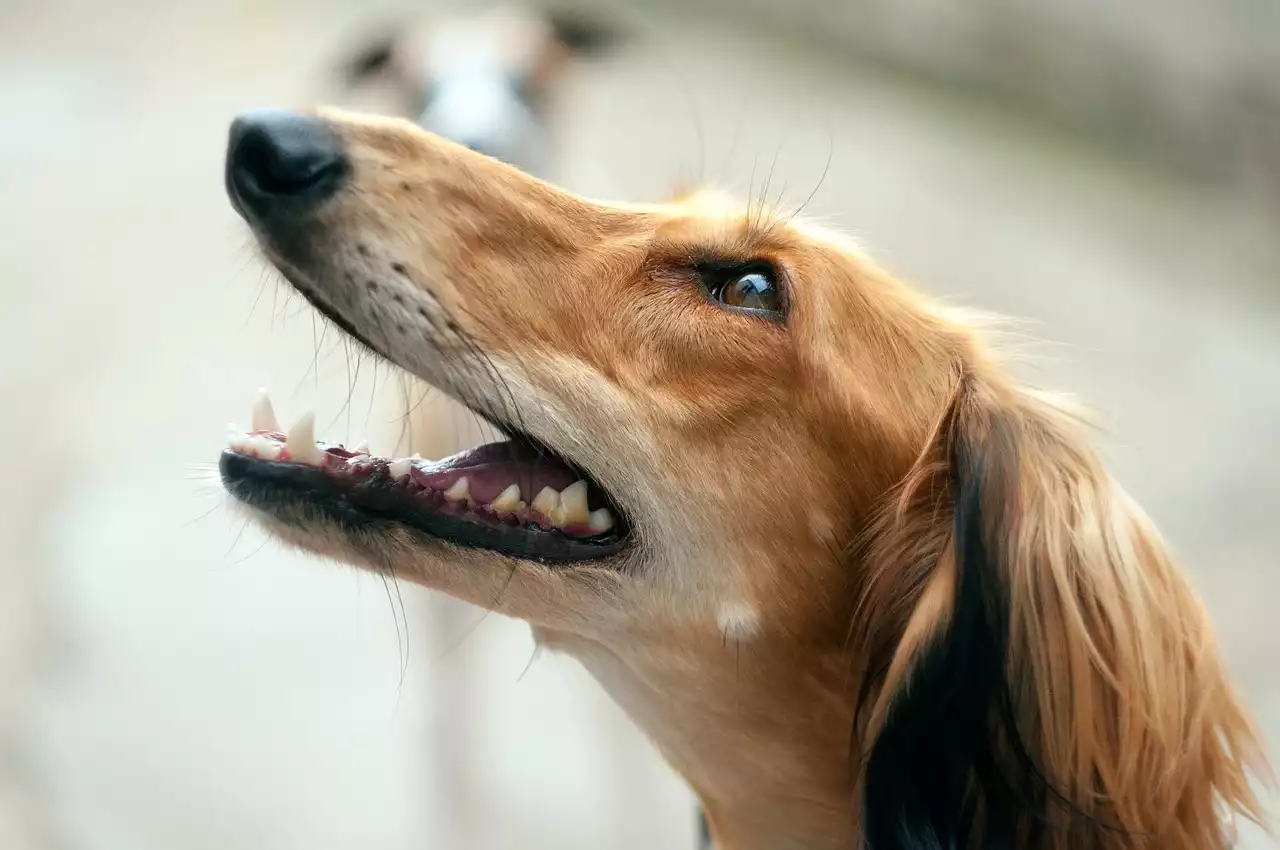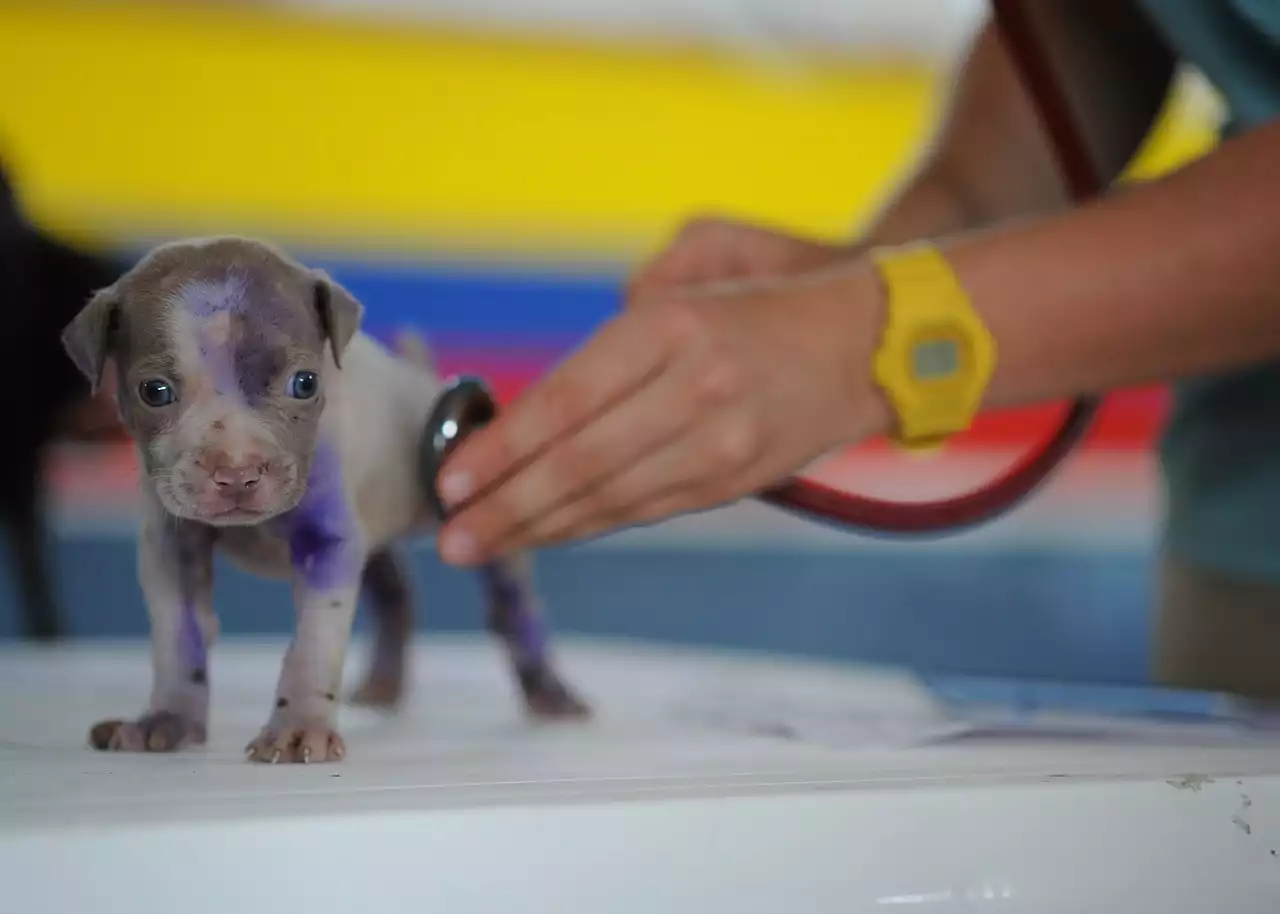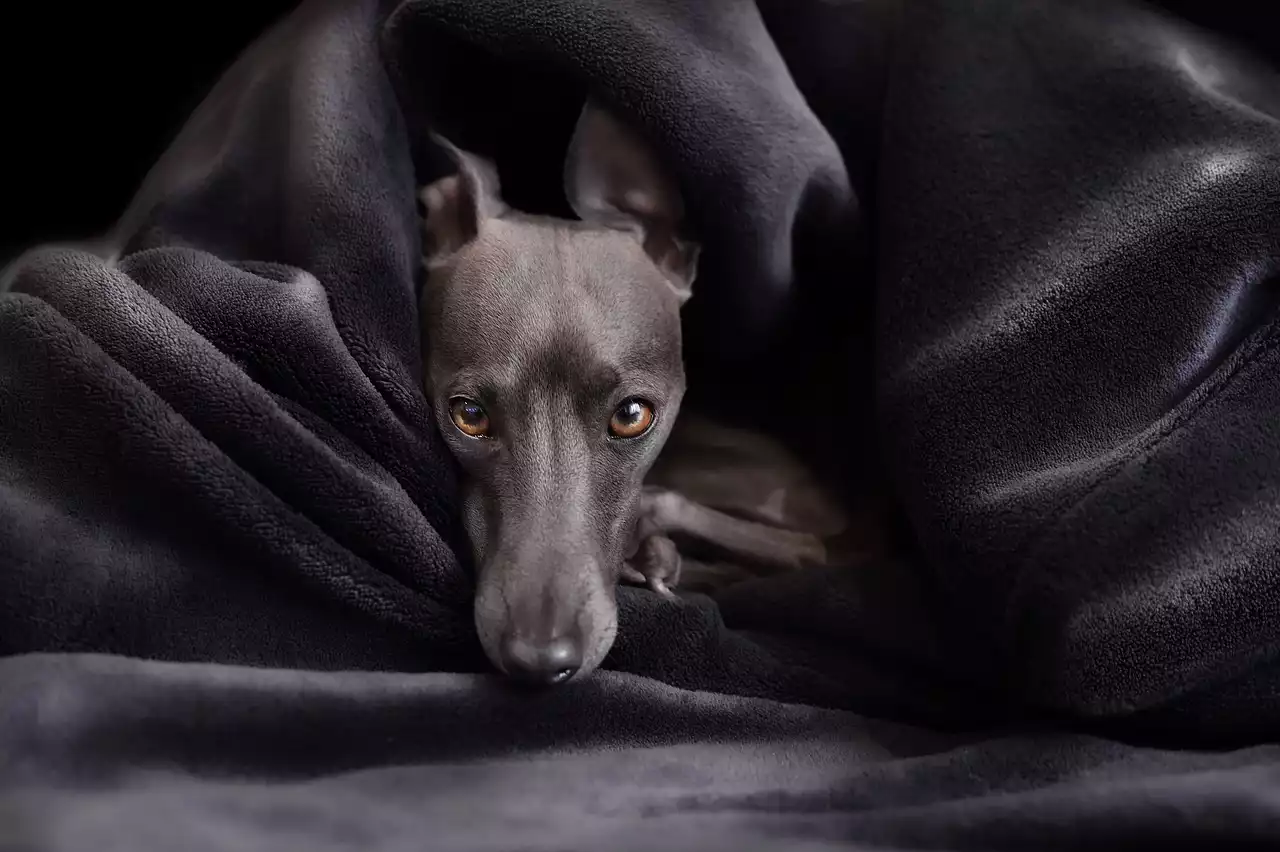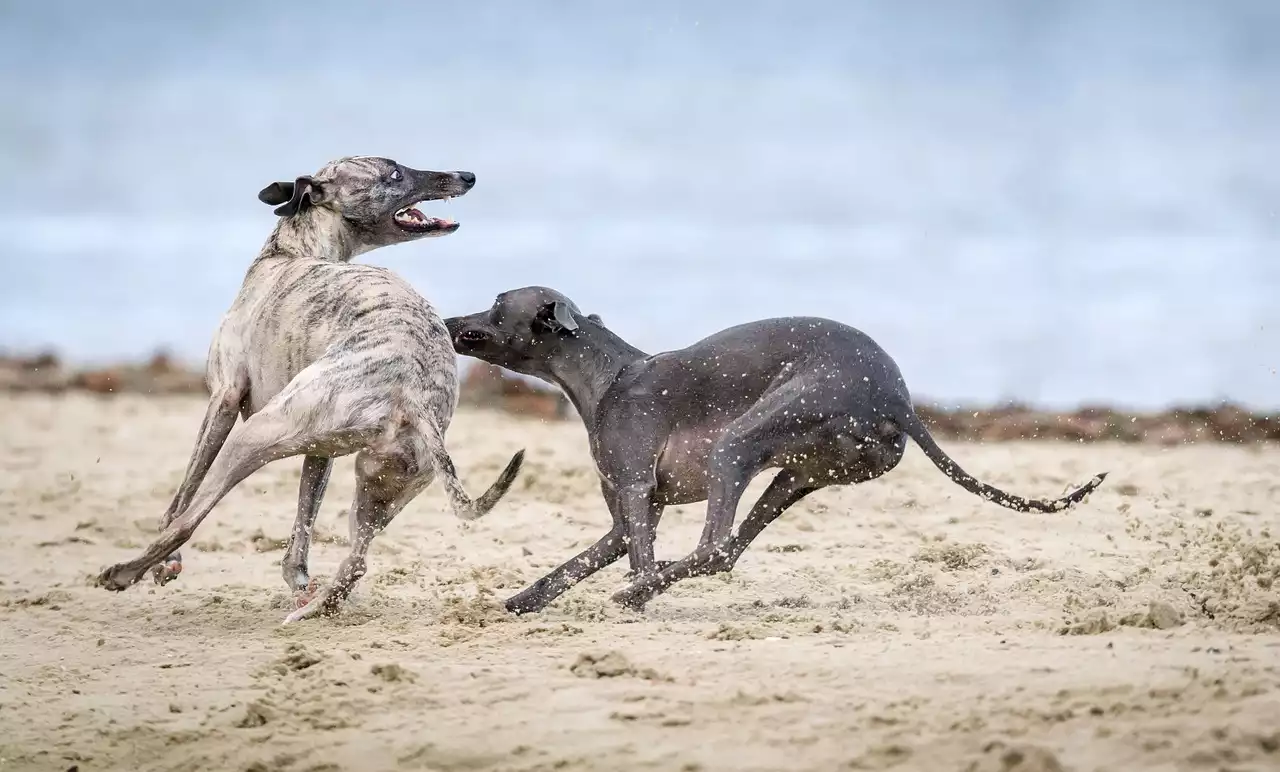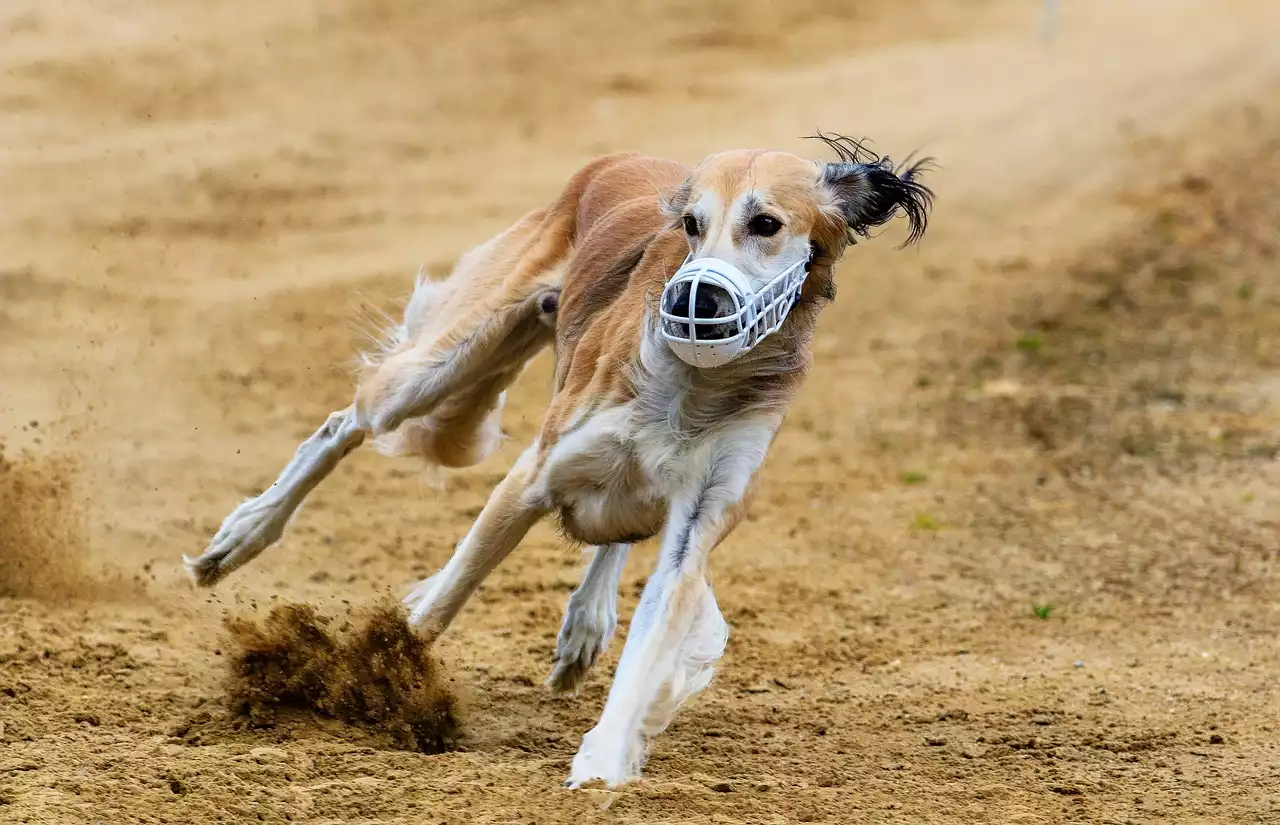The unique needs of retired racing greyhounds
Retired racing greyhounds have unique needs that are different from other dog breeds. As athletes, they have spent most of their lives in kennels and on the racetrack, so they require special care and attention when transitioning to a home environment. One of the first things to consider is their exercise requirements. While they are known for their impressive speed, retired racing greyhounds actually have relatively low exercise needs. Contrary to popular belief, they are not hyperactive dogs that require hours of daily exercise. Instead, they are sprinters who enjoy short bursts of intense activity followed by long periods of rest. A couple of short walks and play sessions each day should be sufficient to meet their exercise needs. It's important to avoid excessive exercise, as retired racing greyhounds are prone to musculoskeletal injuries.
Another important aspect of caring for retired racing greyhounds is providing them with a comfortable and safe living environment. These dogs are used to living in kennels, so they may initially find it challenging to adjust to a home setting. Make sure to provide them with a cozy and quiet space where they can retreat to when they need some alone time. Greyhounds also have thin skin and minimal body fat, making them more sensitive to extreme temperatures. Ensure that their living environment is well-insulated and that they have access to shade and water during hot weather. Additionally, secure your home and yard to prevent any potential escape attempts, as retired racing greyhounds have a strong prey drive and can be quite determined when chasing after small animals.
Retired Racing Greyhound Becomes The Biggest Goofball | The Dodo
Tip 1: Providing a comfortable and safe environment
To ensure that your retired racing greyhound feels safe and secure in their new home, it's important to provide them with a comfortable and cozy environment. Start by setting up a designated area where they can rest and relax. This can be a dog bed or a soft blanket placed in a quiet corner of your home. Make sure that the area is away from any noise or commotion, as retired racing greyhounds can be sensitive to loud sounds. You can also create a den-like space by using a crate or a playpen, which can help them feel more secure.
In addition to a comfortable resting area, it's crucial to make your home safe for your greyhound. Greyhounds are curious creatures and may explore their surroundings, so it's important to remove any potential hazards. Ensure that electrical cords are safely secured and out of reach, and keep toxic substances such as cleaning supplies and medications stored in cabinets or locked away. Install childproof locks on cabinets that contain potentially harmful items. It's also important to secure your yard with a tall and sturdy fence to prevent your greyhound from escaping. Remember, greyhounds can reach impressive speeds, so a regular fence may not be sufficient.
Finally, consider providing your greyhound with a few toys and interactive puzzles to keep them mentally stimulated. Greyhounds are intelligent dogs and enjoy mental challenges. Puzzle toys, treat-dispensing toys, and interactive games can help prevent boredom and provide mental exercise. Rotate the toys regularly to keep things interesting for your greyhound, and always supervise them during playtime to ensure their safety.
Tip 2: Establishing a routine and structure
Retired racing greyhounds thrive on routine and structure. As creatures of habit, they feel more secure and comfortable when they know what to expect. Establishing a consistent daily routine can help your greyhound settle into their new home more easily. This includes feeding them at the same time every day, taking them for walks at regular intervals, and providing play and rest periods. Consistency is key when it comes to training and housebreaking as well. By following a structured routine, you will help your greyhound feel more secure and reduce any anxiety they may experience during the transition period.
When establishing a routine, it's important to consider your greyhound's individual needs. Some greyhounds may be more active and require additional exercise, while others may prefer a more relaxed lifestyle. Observe your greyhound's energy levels and adjust their routine accordingly. For example, if your greyhound has a lot of energy in the morning, schedule their walks and playtime for that time of day. On the other hand, if they are more active in the evening, plan their exercise and mental stimulation activities accordingly. Remember, every greyhound is unique, so it's important to tailor their routine to suit their individual needs.
Creating a structured routine is not only beneficial for your greyhound, but it also helps you stay organized and maintain consistency in your own daily life. By establishing set times for feeding, exercise, and rest, you can ensure that you are meeting your greyhound's needs while also maintaining a healthy work-life balance. A routine can also help prevent behavioral issues, as greyhounds thrive on predictability and knowing what is expected of them. Whether it's mealtime, playtime, or bedtime, sticking to a consistent routine will make life more enjoyable for both you and your greyhound.
Tip 3: Feeding a balanced and appropriate diet
Proper nutrition is essential for the health and well-being of your retired racing greyhound. A balanced and appropriate diet will help maintain their ideal weight, support their overall health, and prevent certain health issues that are common in the breed. When it comes to feeding your greyhound, it's important to choose a high-quality dog food that is specifically formulated for large breeds or active dogs. Look for a food that contains a good balance of protein, healthy fats, and carbohydrates. Avoid foods that contain excessive fillers, artificial additives, and by-products.
Additionally, greyhounds have unique dietary requirements due to their lean body structure and high metabolism. They have lower body fat and less muscle mass compared to other breeds, which means that they require a diet that is higher in protein and lower in fat. Look for a dog food that has a higher protein content and contains quality animal-based protein sources such as chicken, beef, or fish. Avoid foods that have a high fat content, as this can lead to weight gain and other health issues.
It's also important to feed your greyhound the appropriate amount of food to maintain a healthy weight. Greyhounds are prone to obesity, so it's important to monitor their calorie intake and adjust their portions accordingly. Consult with your veterinarian to determine the appropriate amount of food for your greyhound based on their age, weight, and activity level. Keep in mind that individual greyhounds may have different dietary needs, so it's important to monitor their body condition and make adjustments as needed.
In addition to providing a balanced diet, it's important to ensure that your greyhound has access to fresh and clean water at all times. Hydration is crucial for their overall health and well-being, especially during hot weather or after physical activity. Make sure to clean their water bowl regularly to prevent the buildup of bacteria and contaminants.
Tip 4: Providing regular exercise and mental stimulation
While retired racing greyhounds are known for their impressive speed and athleticism, they do not require excessive exercise. Contrary to popular belief, greyhounds are not hyperactive dogs that require hours of daily exercise. Instead, they are sprinters who enjoy short bursts of intense activity followed by long periods of rest. A couple of short walks and play sessions each day should be sufficient to meet their exercise needs.
When it comes to exercise, it's important to provide a safe and controlled environment for your greyhound. Greyhounds have a strong prey drive and can be easily distracted by small animals. It's crucial to always keep them on a leash or in a securely fenced area to prevent any potential escape attempts. Avoid off-leash areas unless they are fully enclosed and free from any potential distractions.
In addition to physical exercise, mental stimulation is equally important for retired racing greyhounds. These intelligent dogs enjoy mental challenges and problem-solving activities. Incorporate interactive games and puzzle toys into their daily routine to keep their minds sharp and prevent boredom. Activities such as hide-and-seek, treat-dispensing toys, and obedience training can provide mental exercise while strengthening the bond between you and your greyhound.
Remember, every greyhound is unique, and their exercise needs may vary. Some greyhounds may have more energy and require additional exercise, while others may prefer a more relaxed lifestyle. Observe your greyhound's energy levels and adjust their exercise routine accordingly. Always consult with your veterinarian to determine the appropriate amount and intensity of exercise for your greyhound based on their age, weight, and overall health.
Tip 5: Grooming and hygiene for retired racing greyhounds
Greyhounds have a short and sleek coat that requires minimal grooming. However, regular brushing can help keep their coat healthy and free from loose hair. Use a soft-bristle brush or a grooming mitt to remove any loose hair and keep their coat shiny. Regular brushing also helps distribute the natural oils in their skin, which promotes a healthy coat. Additionally, it provides an opportunity for you to bond with your greyhound and check for any skin issues, such as dryness or irritations.
Another important aspect of grooming for retired racing greyhounds is dental care. Greyhounds are prone to dental issues, so it's important to establish a regular dental hygiene routine. Brushing your greyhound's teeth at least two to three times a week can help prevent tartar buildup and maintain their oral health. Use a dog-friendly toothbrush and toothpaste specifically formulated for dogs. Gradually introduce your greyhound to the toothbrush and toothpaste to make the experience more pleasant for both of you. If your greyhound is resistant to tooth brushing, consult with your veterinarian for alternative dental care options.
Nail trimming is another essential part of grooming for retired racing greyhounds. Their nails can grow long and become sharp, which can be uncomfortable for them and potentially cause injuries. Regularly trim your greyhound's nails or have them trimmed by a professional groomer. If you are unsure about how to trim your greyhound's nails, consult with a veterinarian or a professional groomer for guidance.
Finally, while greyhounds are generally clean dogs, they may occasionally require a bath. Use a gentle dog shampoo and warm water to bathe your greyhound. Avoid using human shampoos or harsh chemicals, as they can be too harsh for their sensitive skin. When bathing your greyhound, be gentle and avoid getting water in their ears and eyes. After the bath, thoroughly dry their coat to prevent any moisture from getting trapped against their skin, which can lead to skin irritations or infections.
Tip 6: Understanding and addressing common health issues
Like all dog breeds, retired racing greyhounds are prone to certain health issues that are more common in the breed. Being aware of these potential health issues can help you identify any problems early on and seek appropriate veterinary care. Regular veterinary check-ups are crucial for maintaining your greyhound's overall health and well-being.
One of the most common health issues in retired racing greyhounds is dental disease. Greyhounds have a higher risk of developing periodontal disease, which can lead to tooth loss and other dental problems. Regular dental care, including brushing their teeth and providing them with appropriate dental chews and toys, can help prevent dental disease. Additionally, schedule regular professional dental cleanings with your veterinarian to ensure that your greyhound's teeth and gums remain healthy.
Another health issue that retired racing greyhounds are prone to is bloat, also known as gastric dilatation-volvulus (GDV). Bloat is a life-threatening condition that occurs when the stomach twists, trapping gas and food inside. It is more common in deep-chested breeds such as greyhounds. To reduce the risk of bloat, feed your greyhound smaller meals throughout the day instead of one large meal. Avoid feeding them immediately before or after exercise, as this can increase the risk of bloat. Additionally, monitor your greyhound for any signs of bloat, such as restlessness, pacing, drooling, or unproductive attempts to vomit. If you suspect that your greyhound is experiencing bloat, seek immediate veterinary attention.
Greyhounds are also prone to certain musculoskeletal issues, including arthritis and ligament injuries. Their lean body structure and high-speed racing history can put stress on their joints and muscles. It's important to provide them with a comfortable and supportive bed to help alleviate any joint discomfort. Regular exercise and maintaining a healthy weight can also help prevent musculoskeletal issues. If you notice any signs of joint pain or mobility issues, consult with your veterinarian for appropriate treatment options.
Tip 7: Training and socializing retired racing greyhounds
Training and socialization are crucial for retired racing greyhounds to help them adjust to their new home and become well-rounded companions. While these dogs are generally well-behaved and eager to please, they may require some additional training and socialization to help them overcome any racing-related habits or anxieties.
Start training your greyhound from day one using positive reinforcement techniques. Reward-based training methods, such as treats, praise, and play, work best for greyhounds. They are sensitive dogs and respond well to gentle and patient training approaches. Use treats and praise to reward desired behaviors and avoid any punishment-based training methods, as they can cause fear and anxiety in greyhounds.
Socialization is equally important for retired racing greyhounds. They may not have had much exposure to the outside world or other animals during their racing career, so it's important to gradually introduce them to new environments, people, and animals. Start by exposing them to different sights, sounds, and smells in a controlled and positive manner. Take them for short walks in different neighborhoods, visit pet-friendly gardens.
